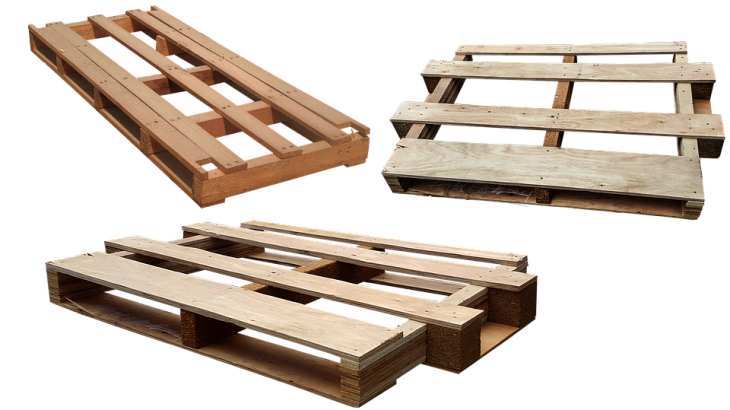Palletizing is a logistical procedure used to assemble loads of goods on a pallet for easy transportation. If this process is not done correctly, it can damage the pallet and the goods on top. Here are the steps to avoid this risk as much as possible.
1. Choose the Right Type of Pallet
There are several types of pallets. Each type of pallet corresponds to the kind of goods you want to place on it. Depending on their material, there are wooden pallets, plastic pallets, cardboard pallets, and metal pallets. The most used is the wooden pallet because any pallet handling machine can handle it.
The wooden pallet is divided into 5 categories:
– The lost pallet is not reusable after the first use
– The EPAL pallet, consigned and adapted to voluminous loads
– The VMF or Verreries Mécaniques de France pallet suitable for bottles under 1000 kg
– The pallet with skids (3 to 5 skids) that can be handled by a manual, electric or semi-electric truck
– The molded pallet is compatible with goods up to 1250 kg of dynamic load.
The plastic pallet is suitable for goods ready for export. Lighter than the wooden one, its quality lies in its resistance to shocks and humidity. As for the metal pallet is intended for goods with a heavy load, used in the automotive and metallurgical industries. The cardboard pallet is designed for industrial use to protect goods weighing less than 500 kg from bad weather. It respects the environment because it is recyclable and biodegradable. Among others, we can mention the European pallet, the American pallet, and the semi-pallet depending on its size. The standard for Europe is the type 1 pallet with a width of 800 m and a length of 1200 m. However, if the transport of your goods is too bulky to fit on one pallet, you can always call on a professional team for crane service to ensure the safety of your goods.
2. Packing Cartons Properly
First, stretch wrap is used to immobilize all cartons on top of the pallet as one unit. Apply the clear stretch film to identify the descriptions on the cartons quickly. However, if they are confidential, opaque stretch film is recommended. Next, the pallet can be strapped to keep the contents completely immobile while being transported, a process known as strapping. The strap is combined with a strapping loop and a strap clip. These are used to connect the two ends of the strap. Afterward, the levels of the pallet can be stabilized with a spacer. Finally, the pallet cover is used; it is positioned at the top of the pallet to protect the goods from pollution and moisture. It is combined with the use of stretch film.

3. Stacking The Boxes
After packing, the boxes must be well organized on the pallet. Here are some rules to follow: first, place the smallest and heaviest boxes at the bottom, then place the lightest and largest at the top. Then, make sure that all the boxes line up perfectly at the same level and that the top of the pallet is flat.



















